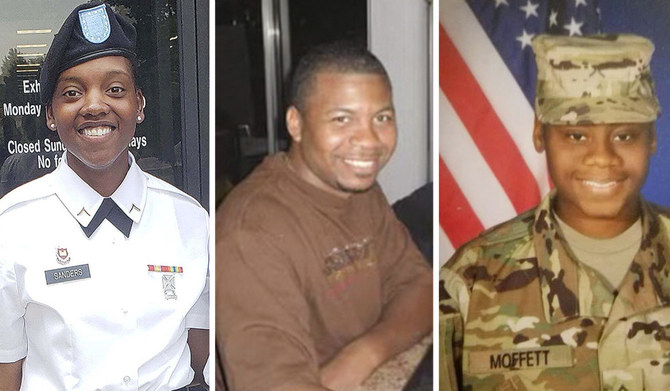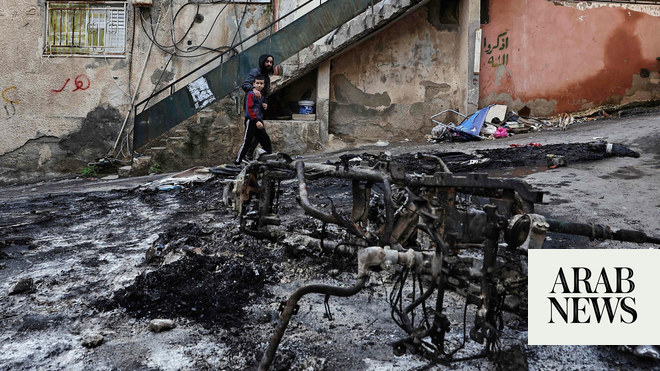
JAKARTA (Reuters) - One mid-February morning in the central highlands of the Indonesian province of Papua, the army said Prada Ginanjar Arianda, a 22-year-old member of the 400 Banteng Raiders commando battalion, was shot in the stomach by separatist fighters and died.
About 24 hours later, after a sweep by security forces through nearby hamlets that sent hundreds of residents fleeing to the safety of two churches, distraught family members were at a health clinic collecting the bodies of three brothers, Janius, Soni and Yustinus Bagau.
Ever since Papua was incorporated into Indonesia after a United Nations-supervised vote by only about 1,025 people in 1969, Indonesia has tried to quell a rebellion among its distinct Melanesian indigenous population of about 2.5 million who are seeking independence. Papua, rich in resources, has among the worst poverty rates in Indonesia despite $7.4 billion of funding by the central government over the past 20 years.
In a statement to media the day after the shootings, the military said the brothers were armed separatists who tried to seize their weapons and were killed by security forces in an act of self-defence. The military did not specify who it held responsible for Arianda’s death.
Reuters spoke to more than a dozen people, including a Catholic priest and a local government official, family members and human rights monitors by phone and also reviewed photos of the men’s bodies, a report on the killing of the brothers by human rights investigators in Papua and other evidence which all cast doubt on the official version of how the men died.
Indonesia is the world’s third-largest democracy, the biggest economy in fast-growing Southeast Asia and an increasingly important global diplomatic player in efforts to resolve conflicts in Myanmar and Afghanistan. But the United Nations and rights advocates say its security forces are carrying out grave abuses at home.
“We are continuing to receive credible reports of excessive use of force by the military and police, including extrajudicial killings, harassment, arbitrary arrests and detention of indigenous Papuans,” Ravina Shamdasani, a spokeswoman for the U.N. High Commissioner for Human Rights, told Reuters.
Since 2010, there have been 178 unlawful killings of civilians by security forces in the Papua region, according to data from Amnesty International. In the past three years alone, Amnesty said there had been at least 83 victims.
Indonesia’s coordinating minister for security Mahfud MD did not respond to detailed findings and questions sent to his office last Tuesday related to the men’s deaths and broader concerns of human rights abuses by security forces in Papua. He released a statement on Wednesday to the media saying that Papua was part of Indonesia and this “will be maintained at all costs necessary.”
An adviser to Indonesia’s president referred Reuters to Mahfud.
The military declined to comment directly on the findings and questions. A spokesman for its Papua command, Colonel Gusti Nyoman Suriastawa, sent a short statement to Reuters accusing separatists, some of them operating under cover as civilians, of terrorising the region.
The armed wing of the separatist Free Papua Organisation (OPM) has killed 11 civilians and wounded four more since January 2020, according to human rights groups and analysts.
A spokesman for the Papuan armed separatists, Sebby Sambom, said the armed uprising was legitimate as former colonial power the Netherlands promised independence to Papua before it was annexed by Indonesia in 1963 and the small vote in 1969 was not an expression of Papuan aspirations. Indonesia claims Papua as its territory, citing the U.N.’s role in the vote and the Netherlands’ recognition of its sovereignty. Sambom said civilians who were killed by the OPM were enemy spies and targeting them was “normal in a war situation.”
Verifying human rights abuses in Papua is difficult. Foreign media have been banned from visiting the area since a deadly crackdown by security forces on mass protests by indigenous people in late 2019.
A 2018 request by the U.N. human rights commissioner for access to the region has not been approved by the Indonesian government after the two sides failed to agree on terms.
‘SHOT IN THE ARM’
On Feb. 15, the day of the shooting, soldiers and police went looking for the perpetrators and searched for weapons among the homes and small farms in Mamba village. Residents told Reuters the soldiers regularly fired their weapons in the air and questioned at least a dozen men.
Janius Bagau, the eldest brother, in his early 30s, was one of those interrogated. The military said in its statement he made a run for it, ignored warnings to stop and was shot in the arm before jumping into a ravine and escaping.
An account compiled from at least five witnesses by the Justice and Peace Secretariat at the Timika Diocese of the Catholic Church said Janius fled because he was beaten and stabbed with a bayonet in his thigh while being interrogated. Reuters could not independently verify the group’s account.
After a perilous journey down a muddy road in the thick jungle, carried by villagers on a stretcher fashioned from a sarong and two wooden poles, Janius was placed in a black pick-up truck and taken to a nearby health clinic in the late afternoon, four witnesses told Reuters.
Spying a small bracelet on the wrist of Janius’ brother Yustinus depicting the Morning Star flag, a popular symbol of Papuan independence banned by the Indonesian government, the security forces detained Yustinus before the group could enter the clinic front gate, the witnesses said.
Slideshow ( 2 images )
At least four were told to leave but Janius, his wife Rut Sondegau and brother Soni were allowed inside the clinic complex.
‘I SCREAMED’
At the Sugapa clinic, Janius was taken into a treatment room, accompanied by Rut and Soni, both 25. They were met there by health workers, and a group of soldiers entered shortly after, Rut told Reuters.
The nurse wanted to put in an intravenous infusion but the soldiers forbade it and then started hitting her husband, Rut said.
Rut and Soni and the health workers were ordered from the room and the health workers then fled, she said. Staff at the health clinic did not respond to requests for an interview.
As Rut and Soni were moved to a different room, Rut said she could hear Janius screaming.
“He screamed out that they had cut his neck. Then, immediately, he did not scream,” she told Reuters.
The soldiers started interrogating Soni. “They asked him: ‘Where are the weapons?’. Soni said: ‘I do not know’,” Rut said.
“They took off Soni’s clothes and tortured him and stabbed him with a knife,” said Rut, who said she witnessed the scene and saw him die. “I screamed: ‘God, the Father.’”
Rut hid in the health clinic’s staff quarters during the night before escaping early next morning to a nearby church. Reuters could not independently confirm Rut’s account.
The head of the local government, Natilus Tabuni, said he told local leaders that the brothers were dead. At about 9 a.m., Rut said she and the priest, Justinus Rahangiar, family members and a local government official, went to the health clinic to pick up the dead bodies of Janius, Soni and Yustinus, which were packed in orange body bags with their hands bound.
Photos of Soni’s corpse shared with Reuters show his face bloodied and bruised, with cuts on his face and ear. Three family members and Father Justinus confirmed that the photos were of Soni.
Dr Lindsey Thomas, a forensics expert affiliated with Physicians for Human Rights, a U.S.-based non-profit group that advocates against mass atrocities, reviewed the photos of Soni and said his wounds were consistent with blunt force injuries. But she said it was impossible to ascertain from the photos what caused the wounds, or how he died. Father Justinus denied the men were shot and described the three bodies as “battered” when he saw them.
The account of the deaths by the military, known as the TNI, paints a different picture to that pieced together by Reuters.
“The three of them tried to escape, attacked and attempted to seize weapons from the joint military-police team guarding the health clinic. The team swiftly killed the three people,” military spokesman Suriastawa said in the statement.
Rut said that was not true. “Soni never went for their weapons,” she told Reuters. She said the three men were separated and Janius and Soni did not attempt to escape before they were attacked by the soldiers.
RAG-TAG BUT WELL-ARMED
The OPM, which is seeking independence for Papua, does not appear to be a formidable fighting force. Recent videos and photos from the central highlands show some of the fighters in shorts and old T-shirts, with some holding semi-automatic weapons.
But in the Intan Jaya local government area, where the Bagau brothers lived and died, the OPM has become especially active and effective in the past two years, said locals and analysts. The region of some 40,000 people was created in 2008, one of many local government areas formed and funded under the central government’s “Special Autonomy” programme for Papua.
Home to the undeveloped Wabu block gold and copper deposit that has been valued at $14 billion and is owned by Indonesia’s central government, Intan Jaya has been destabilized by disputed local election results and allegations of corruption, say locals and analysts. An influx of military and police, whose tactics some experts say are brutal and inept, has inflamed separatist sentiment.
In its statement to the media the day after the shootings, the military said the brothers were members of the OPM’s armed wing and had “often carried out acts of terror.”
As evidence, it said two of them had signed what the military described as a “war declaration” that was sent to military and police in Intan Jaya by the local OPM commander, Undius Kogoya. The undated, hand-written document, seen by Reuters, identifies the area the group calls its “battlefield” and boasts of shooting security forces. None of the Bagau brothers’ names are listed on the document.
Kogoya could not be reached for comment. Police did not tell Reuters when exactly they received the document, and declined to comment further.
Janius, who worked at a small finance company, had two children and was a candidate to become village chief, the Timika Diocese’s Justice and Peace Secretariat said. Soni and Yustinus were both married and worked as farmers, the humans rights group said. None of the men were members of the OPM, said its spokesman, Sambom.
“They were residents of the village, not members of the OPM,” Tabuni, the district chief, told Reuters.
Military spokesman Suriastawa declined to comment directly on whether he still believed the brothers were members of the OPM.
ANOTHER RECENT CASE
In September, Reverend Yeremia Zanambani, also from Intan Jaya, was shot dead in a pigpen, likely killed by soldiers searching for weapons the day after another soldier’s death, according to the National Commission on Human Rights, an independent body established by the Indonesian government. Suriastawa said the military “respected” the finding but did not say the army was responsible for the killing.
The pastor’s death followed the abduction and killing of Luther and Apinus Zanambani, relatives of Yeremia, by the military in April. The commander of the army’s military police, Dodik Widjanarko, identified nine soldiers as suspects in the case in December. He said the men’s bodies were burned and their remains thrown into a river.
The military initially blamed separatists for the deaths of all three Zanambanis. The central government and military only launched their own inquiries after the release of findings of investigations into the killings by Jakarta-based and Papua-based rights groups.
The U.N. human rights office’s Shamdasani said there was a need for independent investigations that show results, adding a lack of transparency feeds a “cycle of violence.”












